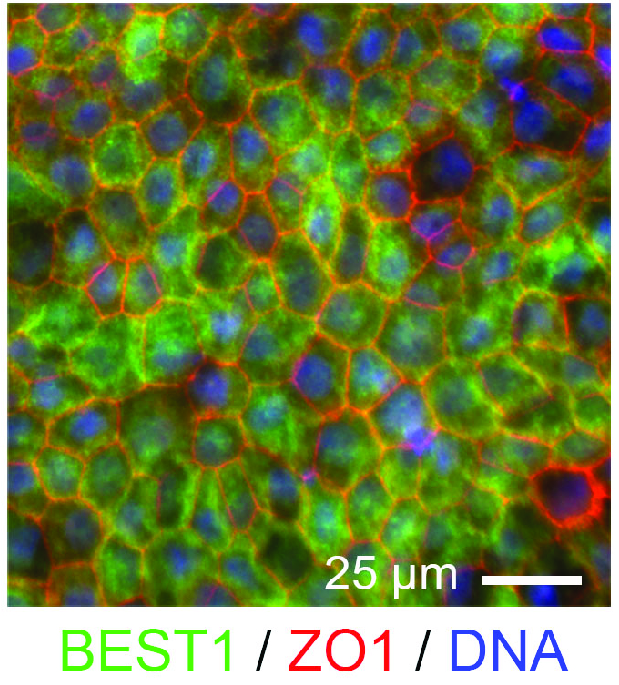
RPE Differentiation of iPSCs
Degeneration of the retinal pigment epithelium (RPE) cell layer is considered the major cause of age-related macular degeneration and replacement by iPSC-derived RPE cells may rescue disease phenotypes. There are, however, significant drawbacks with existing RPE differentiation protocols: they are lengthy, require difficult handling steps or complex cocktails of reagents overall, making them unattractive from a GMP perspective.

Catalent’s patent-pending approach simplifies RPE differentiation from iPSCs by combining streamlined neural induction with enhanced RPE specification under all-2D conditions. Fundamentally, this platform solely relies on an optimized sequence of specific media exchanges making it amenable to automation. The resulting cells have a high purity, express maturation markers after prolonged culture, and display functional features such as melanosomes, tight cell-cell contacts, as well as pronounced microvilli at their apical surface (see figures).

Furthermore, iPSC-derived RPE cells can be efficiently recovered from a frozen state, allowing for the creation of cryopreservation banks with multiple patient doses. This platform is available for partnership or can be licensed separately.
